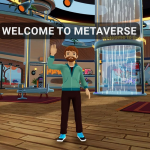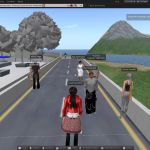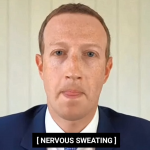
Those who populate the Metaverse
Decentraland, Sendbox, Voxels, virtual worlds and their residents
November 9th, 2022
According to the BCC, nearly $2 billion has spent on 'virtual plots of land' in the last 12 months, within a series of 'digital worlds' known under the generic and omnipresent name Metaverso. But although we are still light years away from the idea of the Metaverse as a single immersive space in which people can live, work and play just as they do in their daily lives, the announcement by Zuckerberg that Facebook would be changing its name to Meta was enough to set off a kind of strange real estate buzz. In January, the virtual real estate market spiked in demand and the cost of land increased by up to 500%, an enthusiasm greeted with positive forecasts by some industry experts, such as Grayscale, and with scepticism by those who were ready to bet that digital real estate is 'the next big flop', rather than 'the next big thing'. Now, with the general collapse of cryptocurrencies, Dapp Radar claims that the Metaverse's real estate market is near an historical low, giving a boost to all those who have always claimed that the land rush would turn out to be a financial bubble ready to burst, like the subprime mortgages on Wall Street in 2008. And yet, there are those who still do not give up and invest in small virtual worlds that are slowly being populated by affectionate inhabitants and in which space plays the most diversified functions.
«I bought my first plot in the Metaverse in July 2020 and paid about £1,500 for it. I bought it to exhibit my work, but also to organise events to promote my art and also the art of other people» Angie, who has built two galleries full of digital artworks in Voxels, one of the dozens of virtual worlds we call the Metaverse, tells BCC. According to Dapp Radar, it was on Voxels that $22 million was spent last year on some 3,000 plots of land. One of the most popular worlds is certainly Decentraland, which is hosting Samsung, UPS and Sotheby's as well as fashion brand Philipp Plein with a plot the size of four football pitches worth $1.5 million. In Sandbox, on the other hand, Adidas, Atari, Ubisoft, Binance, Warner Music and Gucci are just some of the multinational companies buying plots of land and building experiences to sell and promote their products. Gucci has also invested in Roblox, which, along with Minecraft and Fortnite, is seen as the most mainstream of the fledgling Metaverses. Gucci Town has raised more than 36 million within a year of its launch, while Nike Land has recorded more than 25 million visits in 11 months. Fashion seems to be the sector most eager to seize the opportunities (and risks) associated with the Metaverse, as in the case of Amsterdam-based brand The Fabricant, which produces only avatar clothing, designing collections and bespoke garments for users of Decentraland, Sandbox and other crypto Metaverses. The brand also holds the selling record for a digital outfit: $19,000 for an NFT and has raised more than $14 million in funding from private investors.
But what they say is true: the various Metaverse are under-populated, only really used when events are held, and even then only thousands, not millions, of people participate, as was the case for the first Decentraland Fashion Week. It is precisely Decentraland, considered to be the most populated virtual world of all, that has only 8,000 members, and even in the virtual world in which Meta, the owner of Facebook and Instagram, is investing billions of dollars, the data collected shows that people 'won't stay long'. It brings to mind the Second Life model, a pioneer in the construction of Web3, which peaked in the late 2000s with millions of users and hundreds of exciting headlines about people devoting hours of their daily lives to digital life. Today, the platform still exists and is not deserted, it hosts a small community of faithful 'residents', but very little is left of that fever, of that thrill for novelty that had driven teenagers and adults to experience Second Life. Of course, the pandemic was enough to highlight the fact that everyday life as we know it is by no means a foregone conclusion, and that the future seems ready to hold dystopian scenarios in store for us, but for the Metaverse to become mainstream, we may have to wait for a new apocalyptic event or a generation of digital natives who abhor human contact more than they want it.































































